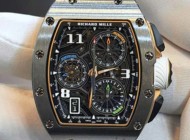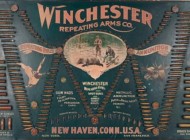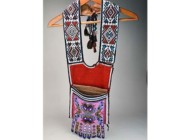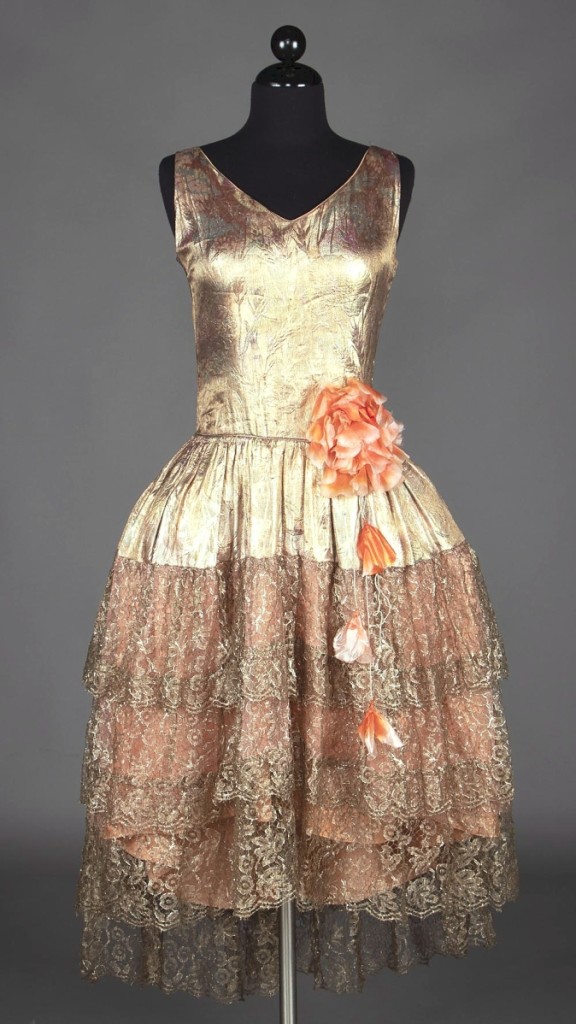
“That was a fabulous piece. These are rare, particularly ones in the condition as good as that one was,” Julia Ricklis said of this mid-1920s lamè robe de style that sold to a private collector for $4,125 ($500/800).
Review by Madelia Hickman Ring, Photos Courtesy Augusta Auction Co.
BELLOWS FALLS, VT. – Augusta Auction Company’s annual pre-holiday sale, held this year on December 8 and titled “December Vintage – Decades of Decadence,” featured 259 lots, of which more than 88 percent of lots found new buyers. The sale was the first live cataloged auction the firm has conducted in more than two years.
“We’re feeling good about the sale,” operations manager, Julia Ricklis said. “It’s a different hybrid model for us; we used to have a very large live sale in New York City each fall but with the pandemic, we haven’t had interest from buyers or staff. Now that we’re getting more interest in a live sale, it felt like a good time to pivot to bringing people back to the area and open it up to a local audience while still having the global reach.”
The sale was conducted in a new venue: The Brattleboro Museum & Art Center, which Ricklis said was “a beautiful space. It is the old train station for the area and has a fabulous marble gallery, which has museum-quality lighting where we held the sale.” She confirmed that the trend of new registrants and buyers that began during the pandemic continued for this sale.
With numerous sales and lots to troop across the auction block, one can imagine that sales might start to blend together in one’s mind; it helps a sale stand out if there is a significant grouping of unusual material that is not part of the usual offerings a house typically presents. In the case of this sale, it was 18 lots deaccessioned by the Costume Collection of the National Society for the Colonial Dames of America that no doubt distinguished it. A significant portion of the NSCDA deaccession were several pieces of Eighteenth and Nineteenth Century menswear.
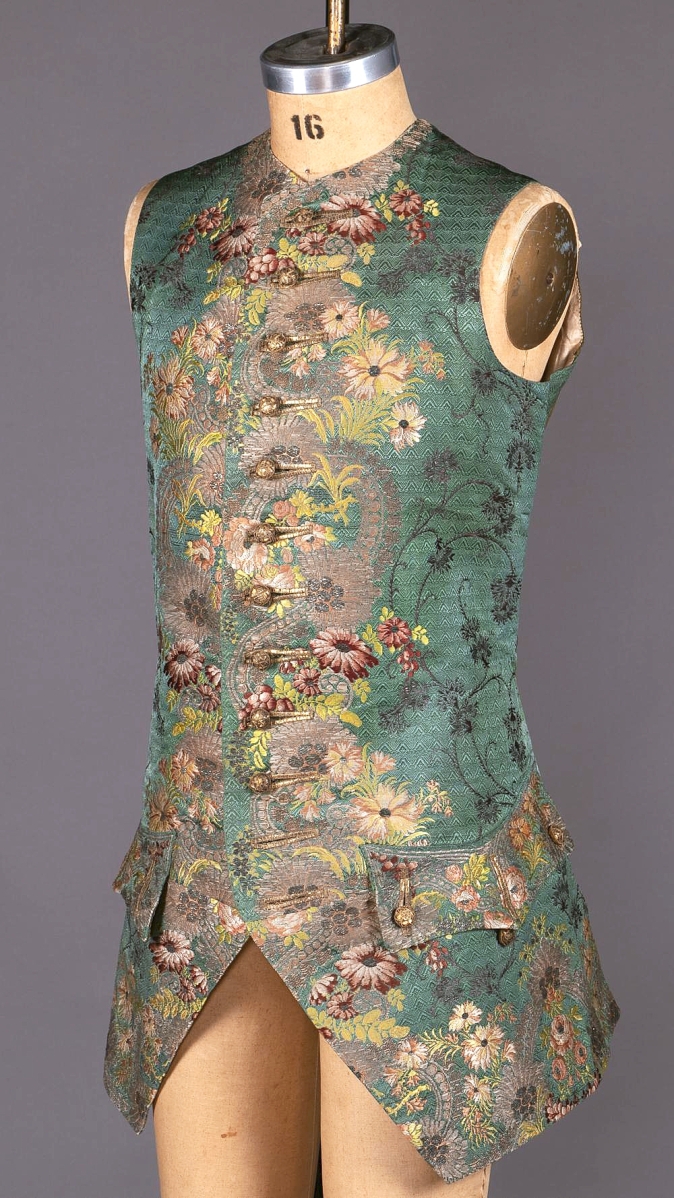
Rarity was surely a factor in the interest and result for the sale’s top lot, a silk and metallic brocaded waistcoat from the 1740s-50s that closed out at $10,313. Part of the Colonial Dames Costume Collection deaccession, its provenance to the Dorothy Quincy Homestead also likely drove interest from bidders ($3/5,000).
“It’s very unusual to get a large group of Colonial and early American menswear,” said Ricklis. She was not certain why the Colonial Dames were clearing out their closets but said that the auction house frequently sees historical societies and smaller museums deaccessioning to raise funds for improved storage, or if they are narrowing their focus.
The top lot of the sale was one of these pieces, a superb silk and metallic brocaded waistcoat from the 1740-50s with provenance to the Dorothy Quincy Homestead in Quincy, Mass. After international interest from both institutions and private collectors alike, it sold to an unidentified buyer for $10,313. There had been some speculation that it had been made in England.
A blue ribbed silk sleeved waistcoat with gold rapport embroidery from the Dorothy Quincy Homestead and additional provenance to Josiah P. Quincy, finished at $2,438. It featured gold braid, metallic sequins and foil-covered domed buttons with metallic tinsel and stitched cord overlay, it was cataloged as Continental, possibly Italian or Spanish. Of a simpler aesthetic, an American white broadcloth waistcoat and breeches, in white wool with gold embroidered basket-weave over foil covered boxwood buttons and lined in glazed wool twill, were dated to 1750-60. It had provenance to Dr James Brown Thornton and bore an inked inscription, “Timothy Thornton / 1726-1787.” The two pieces received 71 bid increments, the most of any lot in the sale, and topped off at $7,188. Of similar vintage, an English or French circa 1755 embroidered white ribbed silk waistcoat with exotic multicolor foliate decoration realized $1,813.
Some of the Colonial Dames’ Nineteenth Century deaccessions included a gent’s short waistcoat that had been worn by Jeremiah Wetherbee for his October 14, 1809, wedding and featured warp brocade in complex floral and stripe for $594; two mid-Nineteenth Century silk waistcoats at $375, and a Continental man’s ball costume worn in 1875 by Fred Pille of Cincinnati for $469.
Two Ceil Chapman cocktail dresses, circa 1950s-60s and two black cocktail or evening dresses, from the 1930s-40s, rounded out Twentieth Century offerings from the Colonial Dames.
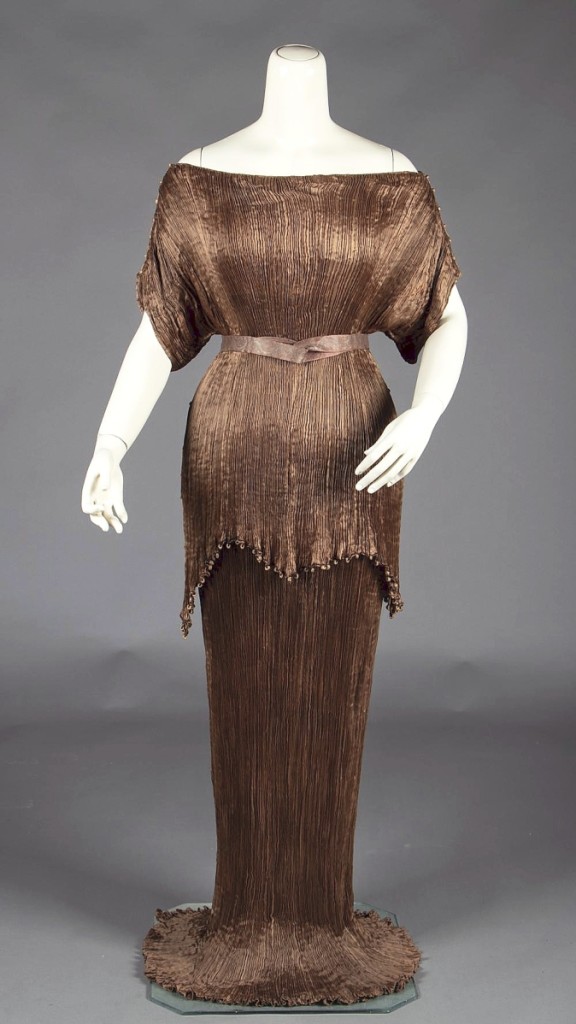
This Mariano Fortuny bronze pleated silk peplos gown dated to the 1920s or 1930s; having descended in the family of the original owner and retained its original box. It was chased by both institutional and private interest, closing at $7,500, the second highest price in the sale ($4/6,000).
One of the most spectacular pieces in the sale was a 1920s or 1930s bronze Fortuny peplos gown that had descended in the family of the original owner and included its original box. Estimated at $4/6,000, it general both institutional and private interest and achieved $7,500. The pleated silk garment was augmented by Murano glass beads.
The Ohio State University Historic Costume & Textiles Collection also deaccessioned pieces, a total of 14 lots. It was led at $4,750 by an unlabeled evening dress attributed to Lucile.
“It was impeccably made,” Ricklis said. “There was some very fine detail in the slip hem that had scalloped edging that you’d never see, which was characteristic. It compared to several at the Met and we consulted several experts about it. The consensus was unanimous that it was by Lucile.”
Other pieces from Ohio State included a 1974 Bonnie Cashin coat with designer sketch and slides at $625 and a blond Chantilly lace and printed moire gown, circa 1914, for $563.
“To have an Elsa Schiaparelli couture cape and to be able to ascertain the exact season when it was made was remarkable,” Ricklis said, referencing a tree bark capelet, made in Paris for Schiaparelli’s spring 1934 season. For those who don’t know, “tree bark” is a crushed rayon crepe that was developed in August of 1933; Schiaparelli adopted it for her spring season in 1934. It more than doubled expectations, bringing $3,875.
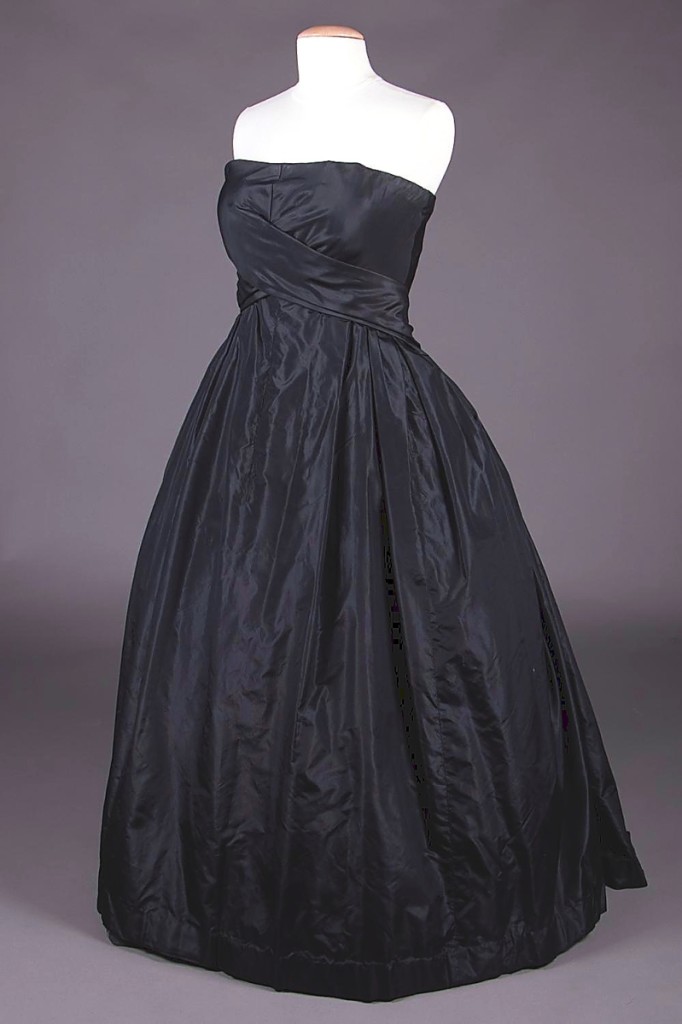
This Christian Dior strapless ballgown was unusual in that the provenance to the original owner was known. It had belonged to Elena Jofré Serey de Chávez (1908-1987) of Santiago, Chile, the wife of Chilean diplomat who served in consular posts in Peru, Canada and the United States, including as Consul General in NYC. It fell short of estimates, surprising the auction house, who deemed it “a very good buy” for $750 ($1,2/1,800).
A multicolored lamè robe de style from the mid 1920s that was in exceptional condition soared past expectations and sold to a private collector, for $4,125. It featured a fitted bodice and pleated attached skirt and a silver and gold lamè Chantilly lace skirt with a silk organza and velvet petal oversized floral panache.
The evolution of late Nineteenth Century style could be compared in two lots: a rose brocaded satin dinner dress from circa 1892 and a pearl embellished wedding dress with full leg-of-mutton sleeves from circa 1895. The earlier piece sold for $3,375, the wedding dress made an even $2,000. Both sold to international private collectors.
Ricklis commented that it was unusual to offer early stays; this sale presented two different opportunities, both from the same seller. The first lot to cross the block – a glazed linen example that dated to the 1820s-30s, sold to “an important American institution,” for $3,375. The other example, which followed immediately afterwards, was a circa 1750s tan linen stays with kid leather trim and reinforced eyelets; it went out for $1,875.
If there was a prize for best backstory, it surely belongs to a set of two paper stewardess dresses that were issued by TWA. One was a French cocktail gold mini dress for themed flights to Paris; the other was a Manhattan Penthouse pajamas for flights to New York City. According to Ricklis, the dresses had been issued to the seller and original owner, who said she had received two sets and never wore the set she was selling. The fragility – and subsequent rarity – of paper dresses and unused condition no doubt justified the $2,313 price paid for the lot by an “important American institution,” the same one that purchased the glazed stays mentioned above.
Augusta Auctions’ next sale is scheduled for February 22.
Prices quoted include the buyer’s premium. For information, www.augusta-auction.com or 802-463-3333.
















